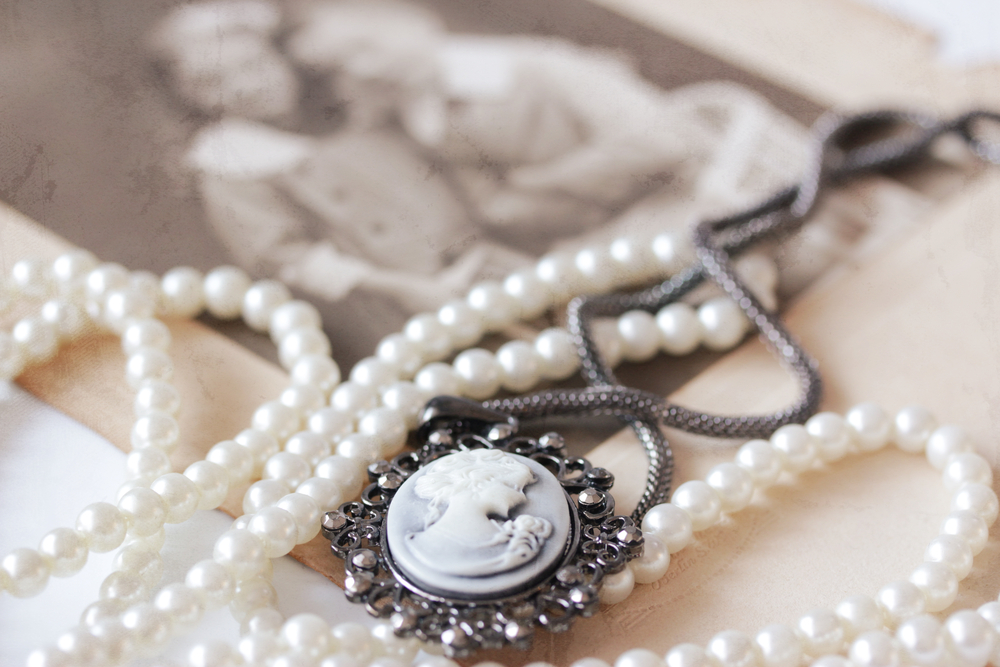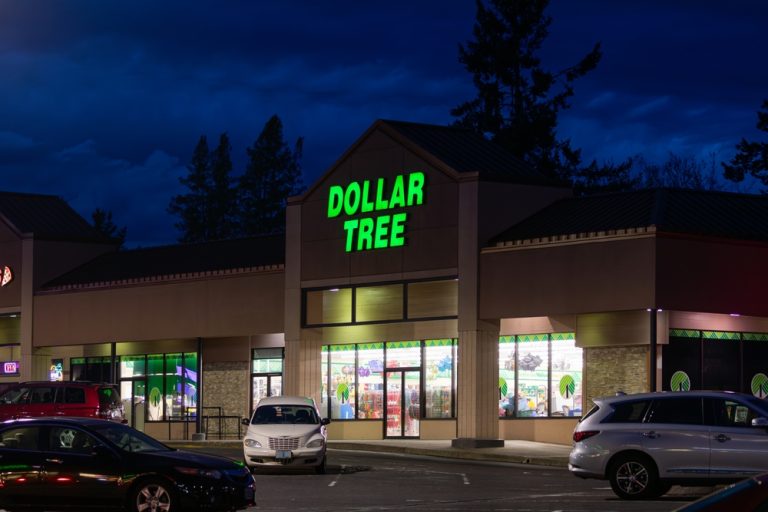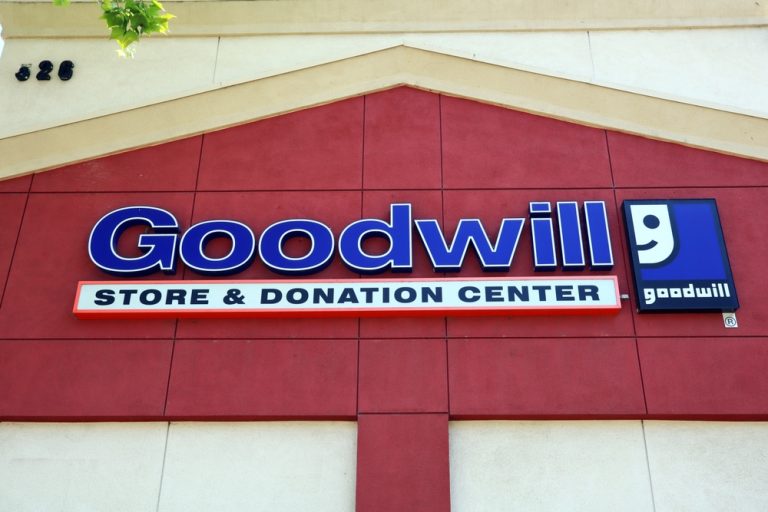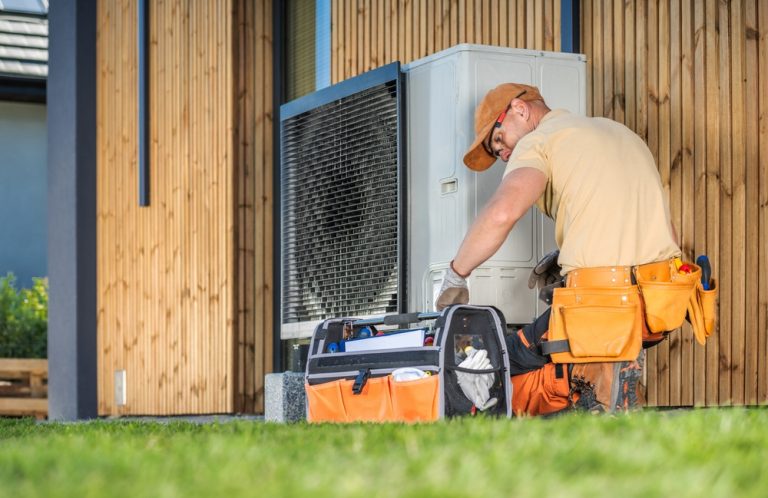You may want to rethink your shopping once you learn about these hidden thrift store secrets!
If you’ve never been there, thrift store shopping can be a bit intimidating. For many, the stores can feel pretty chaotic, with racks packed tightly together and shelves overflowing with a dizzying assortment of goods. They just don’t feel super organized… do they? This initial sensory overload can be enough to turn some first-timers away, but for those who persist, a world of unique treasures awaits.
But once you learn the tricks of the trade, like keeping an open mind and shopping on the weekdays when stores are less crowded and freshly stocked, you can find plenty of secondhand hidden gems for a fraction of their initial cost. The key is to embrace the hunt. And doing so can help you look classy on a budget, furnish your home with unique pieces, and find items with stories to tell. It’s a satisfying feeling to snag a designer label or a perfect piece of vintage decor for just a few dollars.
Thrift store shopping, or “thrifting,” isn’t new, but we are in “the golden age of secondhand shopping.” This resurgence is driven by a powerful combination of economic savvy and a growing collective conscience. People are actively seeking alternatives to the endless cycle of consumerism and looking for ways to express their individuality without breaking the bank or harming the planet.
We already know that buying pre-owned clothing is way more sustainable than purchasing trendy fast fashion, and shoppers are becoming increasingly conscious of buying ethically and sustainably. The environmental toll of manufacturing new clothes, from water usage to chemical dyes, is staggering. By choosing secondhand, shoppers are not just saving money; they are casting a vote for a more circular economy and reducing their personal carbon footprint. It’s a win-win for your wallet and the world.
That said, while the benefits are clear, the world of secondhand has its shadows. There are 7 hidden thrift store secrets you’ll want to keep in mind about these stores before you dive in. It’s not all vintage gold and designer deals. Here’s the dirty truth about your favorite secondhand shops, from potential dangers lurking on the shelves to surprising facts about where your donations actually end up.

Hidden thrift store secret: Recalled items can end up on the shelves at thrift stores
Many donors don’t realize that these stores have strict rules to follow. And breaking these rules can result in costly fines or lawsuits. Most importantly, these rules protect shoppers. Safety is the number one priority, at least in principle. Most large thrift organizations have internal guidelines about what they can and cannot accept, but the sheer volume of daily donations makes comprehensive screening a monumental task.
Federal inspectors often pay visits to thrift stores to ensure the organization isn’t selling anything that’s been deemed hazardous or on the recall list. Nevertheless, recalled items occasionally wind up on thrift store shelves. This can include anything from drop-side cribs, which have been banned for years due to infant safety risks, to small kitchen appliances with wiring issues that pose a fire hazard. Well-meaning donors might simply be unaware that an item they’ve had for years has been recalled.
Many of the thrift shops examined by the United States Consumer Product Safety Commission (CPSC) were found to have recalled items for sale, including children’s toys with small parts that present choking hazards or products coated in lead-based paint. The CPSC actively works to educate thrift retailers, but the responsibility ultimately falls on the store to identify and discard these dangerous products before they reach the sales floor.
So you may want to keep this hidden thrift store secret in mind the next time you’re considering buying something for your kids or grandkids! Before purchasing any baby equipment, toys, or electronics, it’s wise to do a quick search on CPSC.gov using your smartphone. A few seconds of research can prevent a potential tragedy and ensure your amazing find is a safe one.
Hidden thrift store secret: Disgusting things frequently make it into the donations at thrift stores
Whether you regularly shop at The Salvation Army, Goodwill, or any other thrift store, whether nonprofit or for-profit, there are bound to be some less-than-pleasant finds. Thankfully for consumers, most of these are caught before making it out into the store aisles. Employees who sort through donations are the unsung heroes on the front lines, often dealing with things you wouldn’t wish on your worst enemy.
Of course, this still royally stinks for the employees. They are the ones who have to open the bags and boxes, and stories from thrift store workers are legendary. They’ve found everything from dirty diapers and half-eaten food to bags of trash and, yes, even cremated remains in urns. As such, they recommend you not donate anything of the gross variety. A good rule of thumb is: if you wouldn’t give it to a friend, don’t give it to a thrift store.
So, things that have been sitting out in your yard for too long or are moldy or damp … if you donate something like that, even in a batch of clothes, it can quickly ruin other things. Mildew and mold can spread from one garment to an entire bag of perfectly good clothing, rendering it all unsellable. It means they can lose out on donations, and it creates more waste, which is the opposite of the goal of thrifting. Please, wash your donated clothes and ensure items are clean and dry before dropping them off.
Hidden thrift store secret: When shopping at thrift stores, keep in mind that “vintage” can also mean lead poisoning
If you’re a collector of vintage items, you’ll agree that a secondhand store can be a goldmine. Finding that perfect mid-century modern lamp or a set of retro dishware can feel like winning the lottery. But plenty of risks creep into many aisles of your favorite thrift shop. No federal agency regulates the sale of used items in the United States, meaning once a product is sold the first time, it enters a sort of regulatory wild west.
The end result? Many Americans might be bringing the lead-poisoning hazards of other generations back into their homes. Lead was once a common additive in everything from paint to ceramics and glassware, prized for its ability to make colors more vibrant and glass more brilliant. And the worst part is that you can’t tell if a product contains lead simply by looking at it. That beautiful, brightly-colored vintage mug could be leaching lead into your morning coffee.
As part of a study on secondhand items bought from antique, thrift, and junk stores in New York, Virginia, and Oregon, a team discovered that many items contained surface lead concentrations around 700 times more than the federal limit for new products. This is a staggering and deeply concerning figure that highlights the hidden dangers.
These items varied from necklaces and children’s toys to ice cream scoops and window shutters. So, if you plan on buying vintage items from your local thrift store, you shouldn’t assume they’re safe, especially if you plan to eat off them or if they will be handled by children. For a few dollars, you can purchase lead test swabs online or at a hardware store to check suspicious items yourself. It’s a small price to pay for peace of mind.

Hidden thrift store secret: Your donations might end up overseas
Many people donate their unwanted goods with the heartwarming image that their old sweater or pair of jeans will find a new home with someone in their local community. While that certainly happens, it’s far from the full story. Things that don’t sell at thrift store outlets often go to Goodwill auctions or “the bins,” where people can buy items by the pound. Next, items that couldn’t find homes with any bidders get packed up and shipped to a textile recycling organization.
According to Secondary Materials and Recycled Textiles (SMART), 30% of their organization obtains gets processed into industrial rags, 20% is shredded into soft fiber filling for furniture, insulation, and a few other items, and 5% is sent to the landfill. This part of the process is a fascinating example of industrial-scale recycling that most consumers never see.
Nevertheless, the majority, which is 45%, of the clothing that ends up at SMART is either re-sold within the US clothing industry or, more commonly, baled up and sent overseas to be sold in developing nations. These massive, compressed bales of clothing are sold by weight to vendors in countries across Africa, Asia, and South America.
Even though this might sound better than all those items getting sent to a landfill, the publication noted that re-selling clothes into the US secondhand market just encourages them to repeat the cycle all over again. It’s a temporary fix, not a final solution. There is simply too much unwanted clothing in the Western world for any system to handle sustainably.
And another hidden thrift store secret is that sending clothes to other countries can majorly impact the textile industries in underdeveloped countries, robbing locals of incomes and jobs. When markets are flooded with extremely cheap imported secondhand clothing, local tailors, designers, and fabric makers cannot compete. This has led to the collapse of once-thriving local textile economies in several nations, creating a complex ethical dilemma for the global secondhand trade.
Hidden thrift store secret: There can be significant pay discrepancies when it comes to thrift stores
Overall, Goodwill is a very charitable organization, but wage discrepancy is an ongoing matter plaguing this nonprofit thrift shop. The public perception is often that these organizations are powered by volunteers and that revenue goes directly to helping those in need. The reality can be much more corporate. Citing federal tax records, The World-Herald wrote that Goodwill Omaha paid CEO Frank McGree almost $1 million in 2014.
Besides his quarter-million base salary, he was given a $95,000 stimulus bonus, $52,000 in deferred retirement, and a retention bonus of $519,000… AND a membership to a country club. This level of compensation is more aligned with a for-profit corporation than what many would expect from a charity. Besides this, 13 other managers and executives received yearly salaries of over $100,000 that year, indicating a top-heavy compensation structure.
Now, learning this hidden thrift store secret and considering the Goodwill brand is a $6.1 billion industry, you may conclude that they pay their employees well. Well, not so fast! Unfortunately, this doesn’t apply to all employees, particularly those the organization was founded to help.
While some higher-ups were “living it up,” many disabled employees were earning as little as 22 cents per hour, which is well under minimum wage due to some kind of legal loophole in the Fair Labor Standards Act. This provision, known as Section 14(c), allows employers to obtain special wage certificates to pay disabled workers based on their productivity compared to a non-disabled worker. This practice has faced intense scrutiny and criticism from disability advocates for being exploitative.
Conclusion? You can afford to pay your executives six- and seven-figure salaries but can’t afford to pay minimum wage to your employees?… Interesting! It reveals a potential disconnect between the public-facing mission and the internal business practices of some of these large-scale nonprofit entities, a secret that many donors and shoppers would find troubling.
Hidden thrift store secret: Chances are your local thrift stores are selling something hazardous
As we mentioned, many thrift shops list their do’s and don’ts about donating. Goodwill, for instance, doesn’t accept large appliances like stoves or CRT televisions due to the Digital TV Transition. They also reject items like firearms, car seats (which have expiration dates and unknown crash histories), and building materials like carpeting.
It may go without saying, but these types of stores also want to avoid being burdened with hazardous materials. Things like paint, cleaning supplies, or anything flammable are typically prohibited. Some Salvation Armies have banned entire categories of objects because the hazards associated with accepting them overshadow the benefits. For example, bicycle helmets are often rejected because it’s impossible to know if their structural integrity has been compromised in a previous accident.
Nevertheless, this could be a bit more foolproof, as screening is not always perfect. You might not even realize when something for sale poses a health hazard. The danger isn’t always as obvious as a frayed electrical cord. It could be a piece of older particleboard furniture off-gassing formaldehyde or a vintage plastic toy containing banned phthalates.
The US Consumer Product Safety Commission notes that in its surveys, 69% of thrift shops contain at least one hazardous product. That means if you walk into three different thrift stores, two of them are statistically likely to have something dangerous on the shelves. This is a sobering statistic for any thrifter.
This varied from cribs that didn’t meet federal safety standards, children’s clothing with drawstrings that didn’t meet CPSC guidelines, and old hairdryers that didn’t have the required immersion safety plug to prevent electrocution if dropped in water. The breadth of potentially unsafe items is vast.
So, knowing this hidden thrift store secret, it might just be best to avoid buying certain items at thrift stores, especially when it comes to baby items. Always exercise caution with electronics, kitchenware that will touch food, and anything intended for a child. A great deal is never worth compromising your family’s safety.

Hidden thrift store secret: How nonprofit ARE thrift stores?
Back in 2015, the chain of thrift stores “Value Village” (also known as Savers in some regions) were sued for deceiving people about how much their donations go to charities and covering up their role as a for-profit company. The lawsuit alleged that their marketing misled consumers into believing the company was a charity, when in fact it was a private equity-owned, for-profit global thrift retailer.
At the end of 2019, a judge ruled that the organization violated the law and fooled its customers into believing the stores were nonprofit. The company’s business model involved paying partner charities a bulk rate for donated goods, then selling those goods for a significantly higher retail price. While legal, the marketing was deemed deceptive because it gave the impression that the full purchase price or donation was going to the partner charity.
These laws help safeguard consumers, of course, but it’s essential to note that even bona fide nonprofit thrift stores don’t donate all their money to charity or use it all on their programs. Like any large organization, they have significant overhead costs, including rent, utilities, transportation, and employee salaries.
The Better Business Bureau specifies that nonprofits have to spend at least 65% of total expenses on program services to meet its standards. This means there are many variables in how nonprofits can use the rest of their income—up to 35% can go toward administrative costs and fundraising expenses. This can include marketing campaigns, professional fundraisers, and, as noted earlier, substantial executive salaries.
So if you’ve been exclusively shopping at thrift stores because you thought you were helping a charitable cause, it’s a bit more complicated than that. While you are supporting their mission and programs to some extent, it’s not a direct one-to-one contribution. We think it’s safe to say that you can shop at other places too, including Amazon, without guilt, as long as you’re an informed consumer everywhere you shop!
Did you know about these hidden thrift store secrets? The world of secondhand shopping is complex, with amazing benefits and surprising downsides. Being aware of these issues doesn’t mean you should stop thrifting, but rather that you should do so with your eyes wide open. Please feel free to share your thoughts with us in the comments section below. Have you ever found a recalled item or had a questionable experience?
And if you liked this article, you may want to also read: Retail Closures: 8 Beloved Stores That Are Shutting Down















One Response
Any one who donates anything to the Goodwill stores is contributing to their fraud.